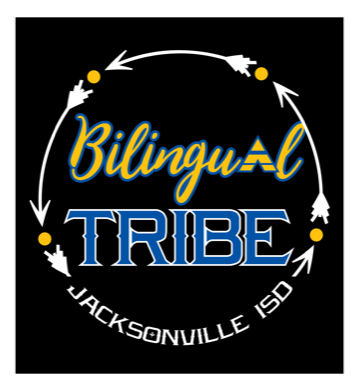English as a Second Language (ESL)
Bilingual/ESL Program Mission Statement

JISD is committed to addressing the affective, linguistic and cognitive needs of students who are identified as English Language Learners by providing them an equal educational opportunity through Bilingual and English as a Second Language (ESL) programs.
The JISD Elementary Bilingual/ESL Programs will emphasize the mastery of English language skills, as well as mathematics, science and social studies enabling ELL's to participate effectively and equitably in the teaching/learning process through the state's curriculum, the Texas Essential Knowledge and Skills (TEKS) and the English Language Standards (ELPS). This will allow students to reach their full potential through equitable experiences which ensure that they become confident, productive and competent members of our multicultural society.
The JISD Elementary Bilingual/ESL Programs will emphasize the mastery of English language skills, as well as mathematics, science and social studies enabling ELL's to participate effectively and equitably in the teaching/learning process through the state's curriculum, the Texas Essential Knowledge and Skills (TEKS) and the English Language Standards (ELPS). This will allow students to reach their full potential through equitable experiences which ensure that they become confident, productive and competent members of our multicultural society.
What is the English as a Second Language Program?
Texas Education Code 29.055 defines the program of instruction "English as a Second Language" as "a program of intensive instruction in English from teachers trained in recognizing and dealing with language differences." The program goal is to enable limited English proficient students to become competent in the comprehension, speaking, reading, and composition of the English language through the integrated use of second language methods.
Instructional Components and Benefits
The English as a second language (ESL) program addresses the affective, linguistic, and cognitive needs of limited English proficient students.
Elementary ESL
Texas Education Code 29.055 defines the program of instruction "English as a Second Language" as "a program of intensive instruction in English from teachers trained in recognizing and dealing with language differences." The program goal is to enable limited English proficient students to become competent in the comprehension, speaking, reading, and composition of the English language through the integrated use of second language methods.
Instructional Components and Benefits
The English as a second language (ESL) program addresses the affective, linguistic, and cognitive needs of limited English proficient students.
Elementary ESL
The elementary ESL program is a self-contained sheltered instructional model, with an ESL certified teacher.
Secondary ESL
Secondary ESL
The secondary ESL program is a content course model with grade-level objectives delivered through modified instruction that makes information comprehensible to students. In grades 7-12, English and reading courses are taught by ESL certified teachers, while other content courses are taught through sheltered instruction strategies by teachers trained in second language acquisition methods.
Questions?
What is the difference between speaking skills and reading and writing skills?
The student's daily oral face-to-face communication for personal and social purposes is known as Basic Interpersonal Communication Skills, or BICS. It takes two years exposure to English in order to develop a relatively high degree of English communicative skills.
The level of English proficiency needed for academic learning (reading and writing) is referred to as Cognitive Academic Language Proficiency, or CALP. CALP takes from five to seven years to develop.
Even though your child is orally fluent in English, he or she may still not be academically prepared to compete in an all English classroom. Our ESL program carefully structures the development of both oral and academic language in a stress-free environment while considering the student's cultural background.
Who participates in the program?
Participants are students in grades PK-12 who are limited English proficient and whose native language is other than English.
How are these students identified?
Students are identified by the Home Language Survey. If the Home Language Survey indicates a home language other than English, students are assessed with an oral language proficiency test. Assessment results determine the program placement of the student based on criteria set by the state.
How can the ESL program be successful?
The ESL program will continue to be successful with parental and community approval and support. Parental participation enhances the quality of our program and ensures proper implementation. With your participation, this program will continue to succeed .
Questions?
What is the difference between speaking skills and reading and writing skills?
The student's daily oral face-to-face communication for personal and social purposes is known as Basic Interpersonal Communication Skills, or BICS. It takes two years exposure to English in order to develop a relatively high degree of English communicative skills.
The level of English proficiency needed for academic learning (reading and writing) is referred to as Cognitive Academic Language Proficiency, or CALP. CALP takes from five to seven years to develop.
Even though your child is orally fluent in English, he or she may still not be academically prepared to compete in an all English classroom. Our ESL program carefully structures the development of both oral and academic language in a stress-free environment while considering the student's cultural background.
Who participates in the program?
Participants are students in grades PK-12 who are limited English proficient and whose native language is other than English.
How are these students identified?
Students are identified by the Home Language Survey. If the Home Language Survey indicates a home language other than English, students are assessed with an oral language proficiency test. Assessment results determine the program placement of the student based on criteria set by the state.
How can the ESL program be successful?
The ESL program will continue to be successful with parental and community approval and support. Parental participation enhances the quality of our program and ensures proper implementation. With your participation, this program will continue to succeed .